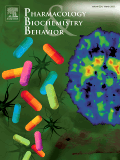“Chronic pain is a complex, severe and debilitating condition which can lead to a considerable reduction in function and quality of life. Patients may present with different forms of chronic pain resulting from a number of identifiable causes, including pain due to lesion or dysfunction of the nerves, spinal cord or brain (neuropathic pain), or persistent pain caused by other non-malignant conditions, such as low-back pain or pain due to inflammation of various arthritic conditions. The prevalence of chronic non-cancer pain or neuropathic pain among Canadian adults is not well known. However, prevalence estimates using large, population-based questionnaires have shown that 4% to 8% of the general population in the developed world experiences neuropathic pain, suggesting that approximately two million Canadians may be affected by this disabling condition. Chronic pain is of particular concern among Canadians aged 65 years and older; based on cross-sectional data from the 1996/1997 National Population Health Survey and the 2005 Canadian Community Health Survey, chronic pain was estimated to affect 27% and 38% of seniors living in households and health care institutions, respectively. A number of treatments are available for the management of neuropathic pain or chronic non-cancer pain. These include tricyclic antidepressants, serotonin-norepinephrine reuptake inhibitors (duloxetine, venlafaxine), anticonvulsants (pregabalin, gabapentin, carbamazepine, phenytoin), topical lidocaine, and opioid analgesics. However, these medications are associated with limited pain relief and numerous adverse effects. The therapeutic use of several synthetic cannabinoid products for the symptomatic relief of chronic pain has also been studied. In particular, a combination of two products, delta-9-tetrahydrocannabinol and cannabidiol (THC:CBD) marketed under the name Sativex® is available for use as a buccal spray. This cannabis-based agent is approved for use in Canada as an add-on therapy for adult patients experiencing muscle spasticity caused by multiple sclerosis (MS), and it has received a Notice of Compliance with conditions for MS-related central neuropathic pain and the treatment of cancer pain unresponsive to opioids. The purpose of this review is to examine the available published literature relating to THC:CBD buccal spray for the treatment of chronic non-cancer or neuropathic pain in adults.”









